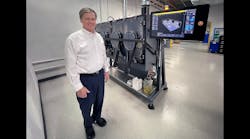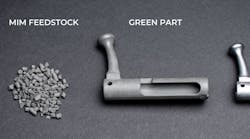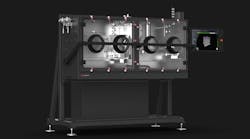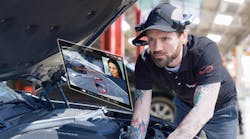For over 20 years, ExOne and BMW have worked together on additive manufacturing projects and developments. BMW currently uses a fleet of 4 ExOne Exerial 3D printing systems with two more being added to expand its production to multiple 100,000 pieces throughout the year.
This video showcases how the luxury automaker uses ExOne binder jet sand 3D printing technology to manufacture water jacket cores in serial production.
When combined with a microwave, a desanding station, and a fully automated conveyor system, the complete Exerial system runs high-speed 24/7 production and delivers high-accuracy parts.
In binder jetting, an industrial printhead selectively deposits a binder into a bed of powder materials—such as sand, metal, or ceramic—creating a solid part one thin layer at a time. When used for sand casting, the sand part is removed and assembled into a mold package used for casting molten metal.
Binder jet 3D printing technology is widely viewed as a desirable and sustainable production method, largely because of its high speed, low waste, and cost, as well as material flexibility.
Importantly, BWM users inorganic binder in its binder jet 3D printing process. This sustainable binder chemistry does not emit odors or emissions during the metal-casting process, which makes it more environmentally friendly.
With the aid of ExOne binder jet 3D printers, complex designs can be realized for casting aluminum powertrain components with ease. Moreover, what makes this technology especially suitable for BMW's serial production is its extremely high speed.
Discover the complete story at: TeamDM.com/BMW



